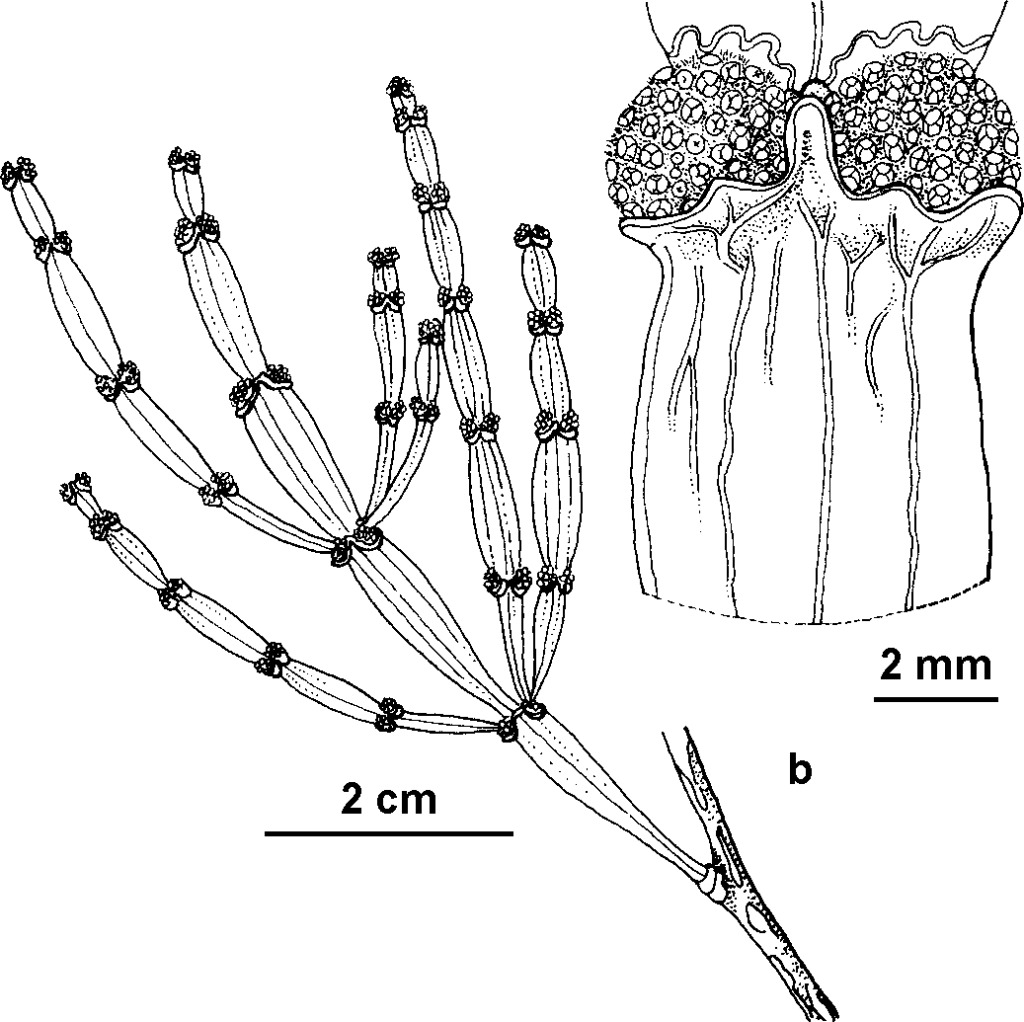Korthalsella rubra subsp. rubra
Jointed MistletoePlant usually 10–16 cm high, usually branched near base only; internodes strongly flattened in 1 plane, narrow-cuneate to narrow-obovate, usually 10–18 mm long, 3–8 mm wide, contracted at apex, a central raised and distinct vein and usually a pair of lateral longitudinal, less distinct veins present. Leaves paired, 0.5–1 mm long, together continuous around node, membranous. Flowers usually 10–80 per cluster, in 2–5 rows almost encircling node initially, separating as internode expands; basal hairs long, sparse, reddish, mostly in a single row between flowers, not forming a dense protruding cushion; male flowers c. 0.5 mm diam., a few in all rows; female flowers to c. 0.5 mm diam. Fruit less than 2 mm long; seed disc-shaped, c. 1 mm diam. Flowers mostly in spring.
GipP, EGL, EGU, HSF. Qld, NSW. Also occurs in New Guinea. In Victoria confined to eastern part of the State, occuring from far East Gippsland and west to Mitchell River National Park. Usually parasitic on Syzygium smithii.
The Korthalsella rubra subsp. geijericola Barlow from inland parts of southern Queensland and extending to south-western New South Wales grows mainly on Geijera parviflora. It differs from the nominate subspecies in having protruding floral cushions composed of a dense mat of white hairs and leaves only 0.2–0.5 mm long and fused as a rim on the face of the internode between the distinct flower clusters.
Jeanes, J.A. (1999). Viscaceae. In: Walsh, N.G.; Entwisle, T.J., Flora of Victoria Vol. 4, Cornaceae to Asteraceae, pp. 45–47. Inkata Press, Melbourne.
 Spinning
Spinning

